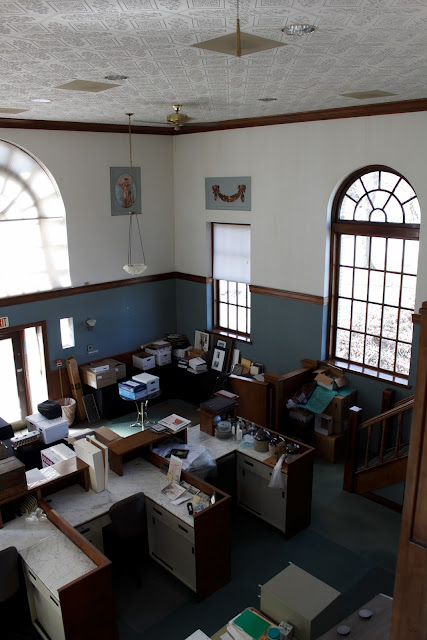The spring cleaning routine that you’re in the midst of —
the organizing and the dusting and the rummaging through that bin of photos and
papers that hasn’t been touched in years — it’s all a semi-regular task in Jeff
Lane’s world.
As French Lick Resort’s historian and archivist, Lane has a jumble
of historical items and relics on his hands to spruce up and sort through. He’s
made a modest dent in the stack of inventory in the few months he’s been on the
job after retiring as a high school history teacher. It’ll take him several
more months to get through all of it.
 |
| Jeff theorizes that the water wagon pictured from this era could have been used to wet down the sawdust riding paths to keep the dirt settled. |
But don’t get the wrong impression: This isn’t tedious or cumbersome work for a history buff like Lane, especially whenever he gets to revel in some cool finds from the pieces of our past.
Old dishes. Framed photos. Thimbles with the French Lick
name and image on the front. Vintage postcards. Even an old, dusty bottle of French
Lick’s famed Pluto water that might be upward of 120 years old. All of it
awaits Lane’s inspection at the building known as The Bank, which is Lane’s
secondary office for sifting through the items before they're archived or put up on display.
 |
| An old aerial view of French Lick Springs Hotel — note how the hotel pool used to be in the front lawn. |
 |
| Adjacent to West Baden Springs Hotel's main entrance archway, the bank was originally inside the hotel up the hill before a separate building was built in 1917. |
The two towns merged into a new bank building a few years
back, and with the West Baden Bank sitting empty, it eventually became the
keeper of historical items that have been accumulated over the years —
sometimes, they even fall right into our lap when guests uncover something in a
basement or attic and bring it with them.
On this Friday morning a few weeks ago, Jeff gets started by
pulling a huge green tub from under a table and leafing through the contents.
It’s not long before something catches his eye.
 “Ooh, these are neat,” Jeff says at the sight of a small postcard/calendar encased in plastic; former French Lick Springs Hotel owner Thomas
Taggart made it a tradition of mailing them out to guests near the holidays. “That’s
actually Thomas Taggart’s signature. It’s the only one I’ve ever seen of his
signature on it.”
“Ooh, these are neat,” Jeff says at the sight of a small postcard/calendar encased in plastic; former French Lick Springs Hotel owner Thomas
Taggart made it a tradition of mailing them out to guests near the holidays. “That’s
actually Thomas Taggart’s signature. It’s the only one I’ve ever seen of his
signature on it.”
And one of the last, too — Taggart passed in March of 1929,
a little more than a year after that card was sent out at the holidays in 1927.
There’s also oodles of photos laying around for Jeff to
catalogue, including another one he sees that piques his interest.
“Oh here’s something,” he says, raising his voice, “there
were gift shops inside the lobby at French Lick.” He points to the photo of the
gift shops, which were similar in style to an indoor mall, making the hotel’s
lobby look nothing like it does today. “Where you see all the furniture now (in
the lobby), there wasn’t room for furniture.”
Some of the most distinctive items at the bank are too big
to fit into a photo sleeve or file folder.
Among his best discoveries in the collection at The Bank was
a long-handle water dipper with West Baden Springs etched onto the glass; guests
used the contraption back in the day to retrieve mineral water from the
underground springs. And among the cadre of old Pluto bottles that have been
collected, the majority are clear glass or green glass but few are the hue of
the dust-caked bottle that Jeff points to.
“They call this black glass,” Jeff says. “And these are the
oldest Pluto bottles that we have, and they may be the oldest Pluto bottles in
existence. The people who made the bottles made them that color so that the
contents would last longer.”
Jeff surmises the bottles could be from as early as 1900.
And with the original Pluto water inside, too. How’d you like a whiff or a swig
of 118-year-old sulfur water? (We might pass on that one.)
A better taste of our history is right around the corner
this spring with French Lick Resort’s Preservation Month featuring historic
displays, features and activities throughout the entire month. Chances are good that The Bank will produce some hidden gems worthy of being featured.








